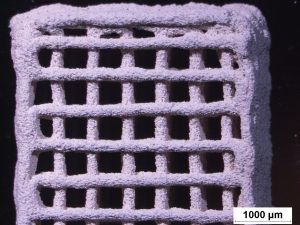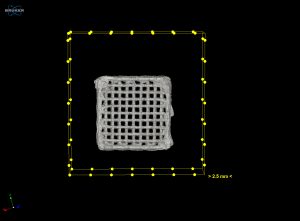Hydroxyapatite is renowned for its remarkable biocompatibility and its crucial role in promoting bone growth and regeneration. More recently, researchers have broadened its use beyond biomaterials, exploring its potential in diverse fields such as energy storage, industrial catalysis, optoelectronics, and advanced functional materials.
Hydroxyapatite: From Biomaterial to Engineering Applications
Functionalization of Hydroxyapatite for Advanced Applications
Surface Modifications to Enhance Functionality
Surface Coatings: Applying specialized coatings to Hydroxyapatite surfaces can significantly enhance its properties, such as biocompatibility, controlled drug release, and mechanical strength. Common coating materials include polymers, bioactive molecules, and nanoparticles. For instance, polymer coatings fine-tune drug release rates, bioactive molecule coatings enhance cell adhesion, and antibacterial coatings help prevent infections.
Composite Materials Incorporating Hydroxyapatite
 Integrating Hydroxyapatite with advanced materials opens up new possibilities for creating high-performance composites with diverse applications.
Integrating Hydroxyapatite with advanced materials opens up new possibilities for creating high-performance composites with diverse applications.
Metal-Hydroxyapatite Composites: Combining Hydroxyapatite with metals or alloys enhances mechanical strength and biocompatibility. Titanium alloys reinforced with Hydroxyapatite particles are widely used in orthopedic implants, providing structural integrity while promoting bone integration.
Carbon-Hydroxyapatite Composites: Pairing Hydroxyapatite with carbon-based materials, such as carbon nanotubes (CNTs) and graphene, boosts mechanical strength, electrical conductivity, and biocompatibility. These composites hold promise for bone tissue engineering, biosensors, and drug delivery.
Ceramic-Hydroxyapatite Composites: Blending Hydroxyapatite with calcium phosphate ceramics improves mechanical properties and enables controlled degradation rates, making these composites ideal for bone grafts, dental implants, and orthopedic coatings.
Bioactive Glass-Hydroxyapatite Composites: The fusion of Hydroxyapatite with bioactive glasses combines bone-regenerative properties with controlled ion release, making these materials highly effective in tissue engineering and drug delivery systems.
Hydrogel-Hydroxyapatite Composites: Incorporating Hydroxyapatite into hydrogels strengthens mechanical properties and introduces bioactivity. These composites serve various biomedical applications, including tissue engineering scaffolds and wound healing.
Transition from Biomaterial to Multifunctional Material
 Recent advancements in material science have led to the transformation of Hydroxyapatite from a traditional biomaterial into a multifunctional material. In the biomedical field, Hydroxyapatite is utilized for drug delivery, tissue engineering scaffolds, and bioactive implant coatings. Researchers leverage controlled release mechanisms and surface modifications to optimize therapeutic delivery and cell growth.
Recent advancements in material science have led to the transformation of Hydroxyapatite from a traditional biomaterial into a multifunctional material. In the biomedical field, Hydroxyapatite is utilized for drug delivery, tissue engineering scaffolds, and bioactive implant coatings. Researchers leverage controlled release mechanisms and surface modifications to optimize therapeutic delivery and cell growth.
Beyond biomedicine, Hydroxyapatite unique properties have paved the way for applications in energy storage and environmental engineering. With high chemical and thermal stability, Hydroxyapatite serves as an effective material for lithium-ion batteries, supercapacitors, and fuel cells. Its ability to adsorb heavy metals and pollutants from water and soil makes it invaluable in environmental remediation.
Photocatalysis and Environmental Remediation
 Heavy Metal Contamination: Hydroxyapatite facilitates the degradation and immobilization of toxic heavy metals, reducing their environmental impact.
Heavy Metal Contamination: Hydroxyapatite facilitates the degradation and immobilization of toxic heavy metals, reducing their environmental impact.
Air and Water Purification: Hydroxyapatite-based composites remove contaminants like lead, arsenic, and cadmium from water while contributing to air purification by decomposing volatile organic compounds (VOCs) and nitrogen oxides (NOₓ).
Energy Storage, Conversion, and Optical Technologies
 Supercapacitors: Hydroxyapatite serves as an electrode material in electrochemical energy storage devices, offering enhanced conductivity and charge capacity.
Supercapacitors: Hydroxyapatite serves as an electrode material in electrochemical energy storage devices, offering enhanced conductivity and charge capacity.
Fuel Cells: Its high surface area and stability enable Hydroxyapatite to function as a catalyst support and proton-conducting electrolyte in solid oxide fuel cells.
Solar Cells: Hydroxyapatite-based photoactive layers to optimize charge transport and energy conversion in next-generation solar cells.
Display Technologies: Rare-earth-doped Hydroxyapatite nanoparticles exhibit fluorescence and optical properties, making them suitable for LEDs and display panels.
 Hydroxyapatite transition from a biomaterial to a multifunctional engineering material demonstrates its versatility and potential in diverse industries. With continued innovation in synthesis and functionalization techniques, Hydroxyapatite will undoubtedly contribute to ground-breaking advancements in material science and technology.
Hydroxyapatite transition from a biomaterial to a multifunctional engineering material demonstrates its versatility and potential in diverse industries. With continued innovation in synthesis and functionalization techniques, Hydroxyapatite will undoubtedly contribute to ground-breaking advancements in material science and technology.






